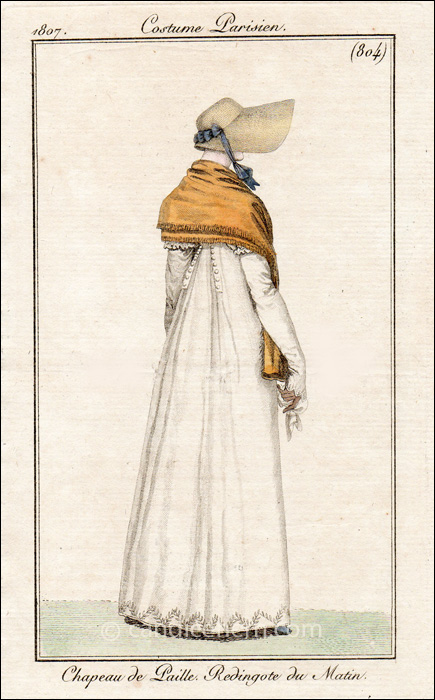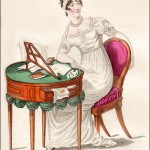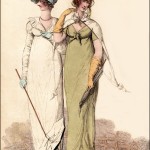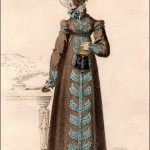Journal des Dames et des Modes, Paris, April 30, 1807.
 “Chapeau de Paille. Redingote du Matin.”
“Chapeau de Paille. Redingote du Matin.”
When applied to women’s fashion, the French term redingote is typically translated as a coat dress or robe, generally open in the front from neck to hem. So this morning robe or coat dress would have been worn with an underdress. The addition of the bonnet makes it an outdoor morning ensemble, or a morning walking dress.
An interesting detail are the two rows of buttons on the back of the dress. This type of facing with buttons is often seen on pockets for riding dresses ( as on this riding habit also from 1807). Here, it seems too far on the back to reach comfortably into a pocket, so perhaps on this dress it is nothing more than decoration.
The long sleeves, which end in lovely scalloped edges over the knuckles, appear to be detachable. Beneath the shawl, we can glimpse the ruffled edge of what looks to be a shorter sleeve. By removing the long sleeves, the dress could be transformed into a summer dress, or even an evening dress if the bonnet and shawl were replaced by appropriate evening accessories.
1807 is the year when bonnet brims took on this crazy tunnel shape, totally obscuring the face. (Read more about this strange 1807 trend here.) The crown is quite small, but the brim is huge, but not wide. It is narrow, like a tunnel. One has to imagine that a woman wearing such a bonnet could only see what was right in front of her, the brim acting as blinders to either side. It’s no wonder the trend did not last beyond 1807. Here, “Chapeau de Paille” translates to straw hat.







